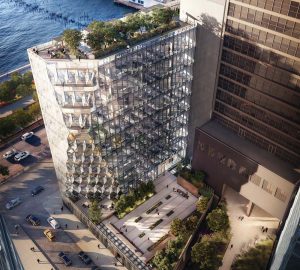Transforming the High Line: A Triumph in Urban Real Estate Introduction Welcome to an exploration of one of New York City’s most fascinating urban transformations. I’m John Doe, an urban development scholar with over a decade of experience studying the architectural landscape of cities. Today, we delve into the transformation of the High Line and
Transforming the High Line: A Triumph in Urban Real Estate
Introduction
Welcome to an exploration of one of New York City’s most fascinating urban transformations. I’m John Doe, an urban development scholar with over a decade of experience studying the architectural landscape of cities. Today, we delve into the transformation of the High Line and its profound impact on the city’s real estate market.
The High Line: From Railroad to Urban Park
The High Line’s journey from a disused railroad to a thriving urban park is a testament to innovative urban planning. Once a vital freight line serving Manhattan’s largest industrial district, the High Line fell into disuse by the late 20th century. However, instead of succumbing to demolition, it was reborn as an elevated park, providing a green oasis in the concrete jungle of New York City. This transformation was not an overnight process. It took years of planning, community engagement, and public-private partnerships to turn this vision into reality.
The Impact of the High Line on Surrounding Neighborhoods
The transformation of the High Line has had a ripple effect on the surrounding neighborhoods. Property values have soared, new businesses have sprung up, and the area has become a magnet for tourists and locals alike. The High Line has not only changed the physical landscape but also the socio-economic fabric of the neighborhoods it traverses. It has brought about a renaissance in areas that were once considered undesirable, turning them into some of the most sought-after real estate in the city.

Picture by: https://ny.curbed.com/
Case Studies: Real Estate Success Stories
The success of the High Line has been a boon for the real estate market. Take, for example, the Standard Hotel, which straddles the High Line. Its unique location and design have made it one of the most sought-after properties in the city. Similarly, the residential buildings along the High Line have seen their values skyrocket, thanks to their proximity to the park. These success stories are not just limited to residential properties. Commercial properties, too, have benefited from the High Line, with new restaurants, shops, and galleries popping up along its route.
The High Line: A Model for Urban Development?
The success of the High Line has sparked a global trend of ‘rails-to-trails’ projects. Cities around the world are looking to replicate the High Line’s success by transforming their own disused rail lines into public spaces. However, it’s important to note that the High Line’s success is not just about the park itself, but also about the community engagement and public-private partnerships that made the transformation possible. It serves as a model for how cities can repurpose their underutilized infrastructure to create vibrant, community-centered spaces.
Future Prospects: The High Line and Beyond
As the High Line continues to evolve, so too does its impact on the city’s real estate market. With plans for further expansion and development, the High Line is set to continue influencing New York City’s urban landscape. As we look to the future, one thing is clear: the High Line is more than just a park – it’s a powerful catalyst for urban transformation. It has the potential to shape the city’s future, influencing everything from real estate trends to urban planning strategies.
Table: Key Points of the High Line’s Impact on Real Estate
| Key Point | Description |
|---|---|
| Property Value Increase | Properties along the High Line have seen significant increases in value. |
| Business Opportunities | The High Line has attracted a variety of new businesses, from restaurants to retail stores. |
| Tourism Boost | The High Line has become a major tourist attraction, drawing visitors from around the world. |
| Global Influence | The success of the High Line has inspired similar projects worldwide. |
Conclusion
In conclusion, the transformation of the High Line is a shining example of how innovative urban planning can breathe new life into a city. It’s a story of how a disused railroad line became a catalyst for change, reshaping New York City’s real estate landscape and setting a precedent for urban development worldwide. As urban development scholars, real estate brokers, and New York City enthusiasts, we can all learn valuable lessons from the High Line’s journey. Whether we’re planning our next real estate investment or envisioning the future of our cities, the High Line serves as a powerful reminder of the potential that lies in our urban landscapes.





















Leave a Comment
Your email address will not be published. Required fields are marked with *